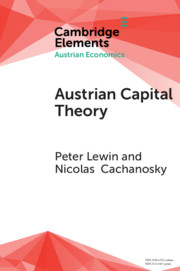Refine search
Actions for selected content:
36 results
Be Brief, Be Consistent, Be Neutral: Comments on US Draft Circular A-4, “Regulatory Analysis”
-
- Journal:
- Journal of Benefit-Cost Analysis , First View
- Published online by Cambridge University Press:
- 13 June 2025, pp. 1-13
-
- Article
-
- You have access
- Open access
- HTML
- Export citation
6 - Cost–Benefit Analysis
- from Part II - Economic Tools and Techniques
-
- Book:
- Economics for a Sustainable World
- Published online:
- 14 July 2025
- Print publication:
- 12 June 2025, pp 175-196
-
- Chapter
- Export citation
Infinitely repeated games in the laboratory: four perspectives on discounting and random termination
-
- Journal:
- Experimental Economics / Volume 20 / Issue 2 / June 2017
- Published online by Cambridge University Press:
- 14 March 2025, pp. 279-308
-
- Article
- Export citation
External and internal consistency of choices made in convex time budgets
-
- Journal:
- Experimental Economics / Volume 20 / Issue 3 / September 2017
- Published online by Cambridge University Press:
- 14 March 2025, pp. 687-706
-
- Article
-
- You have access
- Open access
- HTML
- Export citation
Estimated Values of Avoiding Cancer Risks by Cancer Site and Population
-
- Journal:
- Journal of Benefit-Cost Analysis / Volume 15 / Issue 3 / Winter 2024
- Published online by Cambridge University Press:
- 30 January 2025, pp. 395-439
-
- Article
- Export citation
Discounting in finite-time bargaining experiments
-
- Journal:
- Journal of the Economic Science Association / Volume 10 / Issue 2 / December 2024
- Published online by Cambridge University Press:
- 01 January 2025, pp. 504-518
-
- Article
-
- You have access
- Open access
- HTML
- Export citation
Seven Recommendations for Pricing Greenhouse Gas Emissions
-
- Journal:
- Journal of Benefit-Cost Analysis / Volume 14 / Issue 2 / Summer 2023
- Published online by Cambridge University Press:
- 16 October 2023, pp. 191-204
-
- Article
-
- You have access
- Open access
- HTML
- Export citation
4 - The Problem of Platform Self-control
-
- Book:
- The Networked Leviathan
- Published online:
- 20 July 2023
- Print publication:
- 03 August 2023, pp 109-139
-
- Chapter
-
- You have access
- Open access
- HTML
- Export citation
Measuring time preferences in large surveys
-
- Journal:
- Political Science Research and Methods / Volume 12 / Issue 2 / April 2024
- Published online by Cambridge University Press:
- 25 May 2023, pp. 426-434
-
- Article
- Export citation
Chapter 7 - Forever Wars
-
-
- Book:
- How to End a War
- Published online:
- 02 March 2023
- Print publication:
- 09 March 2023, pp 132-149
-
- Chapter
- Export citation
Why do professional athletes have different time preferences than non-athletes?
-
- Journal:
- Judgment and Decision Making / Volume 6 / Issue 6 / August 2011
- Published online by Cambridge University Press:
- 01 January 2023, pp. 542-551
-
- Article
-
- You have access
- Open access
- HTML
- Export citation
How to measure time preferences: An experimental comparison of three methods
-
- Journal:
- Judgment and Decision Making / Volume 8 / Issue 3 / May 2013
- Published online by Cambridge University Press:
- 01 January 2023, pp. 236-249
-
- Article
-
- You have access
- Open access
- HTML
- Export citation
Introducing money at any time can reduce discounting in intertemporal choices with rewards: An extension of the upfront money effect
-
- Journal:
- Judgment and Decision Making / Volume 10 / Issue 6 / November 2015
- Published online by Cambridge University Press:
- 01 January 2023, pp. 564-570
-
- Article
-
- You have access
- Open access
- HTML
- Export citation
Discounting in Natural Resource Damage Assessment
-
- Journal:
- Journal of Benefit-Cost Analysis / Volume 14 / Issue 1 / Spring 2023
- Published online by Cambridge University Press:
- 22 November 2022, pp. 141-161
-
- Article
-
- You have access
- Open access
- HTML
- Export citation
18 - Ethics
- from Section V - Social Ramifications of Climate Intervention
-
- Book:
- Pandora's Toolbox
- Published online:
- 24 February 2022
- Print publication:
- 24 March 2022, pp 281-295
-
- Chapter
- Export citation
7 - The Empirical Evidence on Dual-Class Stock
- from Part II - Evaluating Dual-Class Stock
-
- Book:
- Founders without Limits
- Published online:
- 29 October 2021
- Print publication:
- 11 November 2021, pp 249-308
-
- Chapter
- Export citation
Chapter 11 - Direct response marketing and sales promotion integration
-
- Book:
- Principles of Integrated Marketing Communications
- Published online:
- 25 February 2021
- Print publication:
- 23 February 2021, pp 398-430
-
- Chapter
- Export citation
7 - Behavioral Economic Considerations of Novel Addictions and Nonaddictive Behavior: Research and Analytic Methods
- from Part II - Clinical and Research Methods in the Addictions
-
-
- Book:
- The Cambridge Handbook of Substance and Behavioral Addictions
- Published online:
- 13 July 2020
- Print publication:
- 06 August 2020, pp 73-86
-
- Chapter
- Export citation
Responsible Precautions for Uncertain Environmental Risks
-
- Journal:
- Journal of Benefit-Cost Analysis / Volume 10 / Issue 2 / Summer 2019
- Published online by Cambridge University Press:
- 02 September 2019, pp. 296-315
-
- Article
-
- You have access
- Open access
- HTML
- Export citation

Austrian Capital Theory
- A Modern Survey of the Essentials
-
- Published online:
- 13 January 2019
- Print publication:
- 10 January 2019
-
- Element
- Export citation
